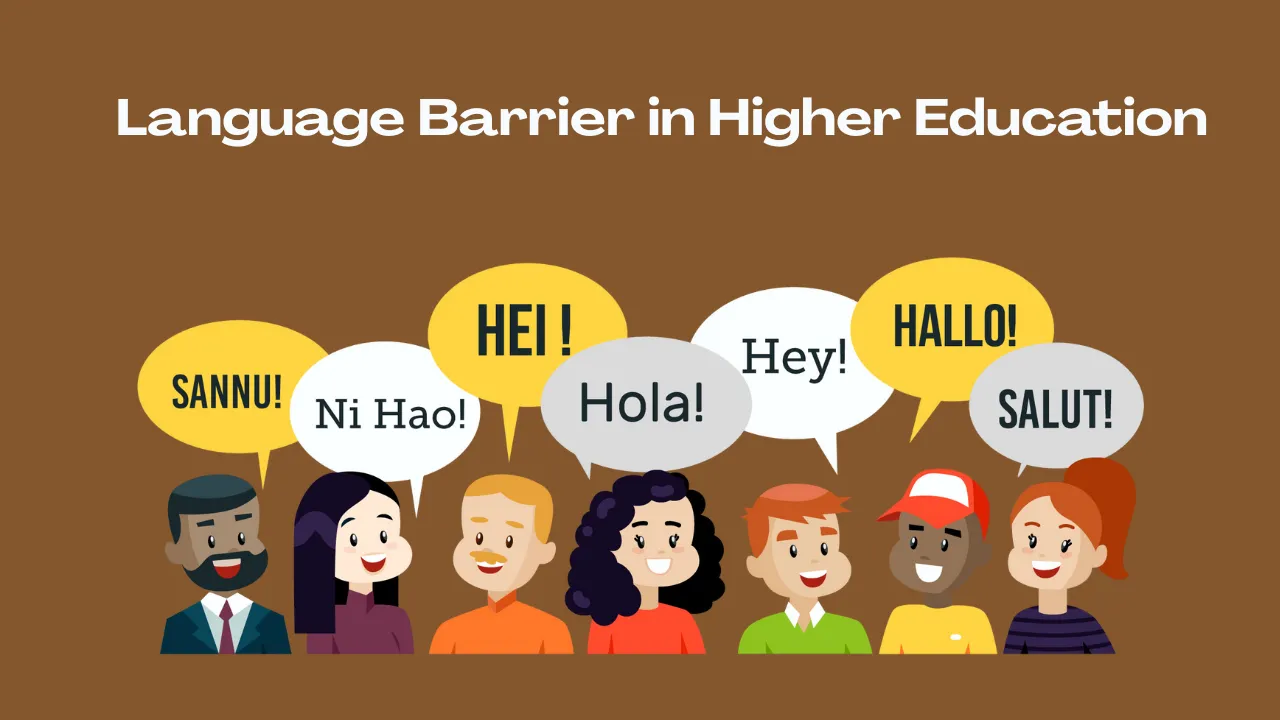Language Barrier in Higher Education: Language barrier in higher education is a growing concern in many parts of the world, especially in countries with diverse languages like India. As higher education becomes more global, language differences often create hurdles for both students and teachers.
This article explores the effects of the language barrier in higher education, the problems it causes for learners, and the steps needed to overcome it. Whether in lectures, textbooks, or exams, language often stands in the way of understanding and success. This guide will give you a clear picture of why language matters and how it affects academic growth.
What is a Language Barrier in Education?
A language barrier happens when students and teachers do not share a common or fully understood language. In higher education, this issue is more serious because subjects are complex, and students are expected to express their thoughts clearly.
Many students in universities struggle because the medium of instruction, often English, is not their first language. This makes it harder for them to follow lectures, write papers, or even participate in discussions.
Why Language Barrier Matters in Higher Education
The language barrier in higher education affects student learning, confidence, and academic performance. When students can’t fully understand the language of instruction, they miss out on knowledge and often perform poorly in exams.
This problem is especially common among students from rural or non-English backgrounds. Even intelligent and hardworking students can struggle simply because they cannot express themselves in the expected language.
Key Challenges Caused by Language Barrier
- Difficulty Understanding Lectures: Students find it hard to follow fast or complex lectures in a second language.
- Struggles with Assignments and Exams: Writing essays or solving problems becomes tough when language skills are weak.
- Lack of Participation: Students hesitate to ask questions or join group discussions, fearing they might be judged.
- Lower Confidence: Constant difficulty with language can reduce motivation and lead to self-doubt.
- Increased Dropout Rates: Some students leave college early because they feel they can’t cope.
Two Major Problem Areas in List Format
1. Classroom Communication Issues
- Teachers speak too fast or use difficult words
- Students afraid to ask questions in front of others
- Limited use of mother tongue for better understanding
2. Exam and Assignment Challenges
- Difficulty writing answers clearly
- Misunderstanding questions due to language
- Poor vocabulary leads to low marks even if ideas are correct
Impact on Teachers and Institutions
The language barrier in higher education doesn’t only affect students. Teachers also struggle when students don’t understand the subject well due to language issues. It becomes harder to teach effectively or evaluate students fairly.
Colleges and universities also face pressure to improve student results and placements. If students underperform because of language, it can lower the reputation of the institution.
Ways to Overcome Language Barriers
To reduce the language barrier in higher education, schools and colleges can take several steps:
- Offer Language Support Programs: Special English or regional language classes to help students improve.
- Use Bilingual Teaching Methods: Mixing English with the local language to explain tough concepts.
- Train Teachers: Help teachers learn how to explain better and adjust their language for student needs.
- Use Technology: Language learning apps, subtitles in lectures, or voice translation tools can help bridge the gap.
- Encourage Peer Learning: Students can help each other in study groups where they feel more comfortable.
Role of Policy and Government Support
Governments can also help reduce the language barrier in higher education by:
- Promoting regional languages in higher education
- Supporting universities to publish materials in multiple languages
- Funding for language training and digital tools in colleges
- Including multilingual support in national education policies
Policies like India’s NEP 2020 also push for more flexibility in the language of instruction, allowing students to learn in the language they understand best.
FAQs
Why is language barrier a problem in higher education?
It affects students’ ability to learn, communicate, and perform well in exams, especially when the teaching language is not their first language.
Can students succeed despite a language barrier?
Yes, with the right support, students can improve their language skills and succeed academically.
What are some quick ways to reduce language barriers in class?
Use simple language, offer extra help sessions, and allow students to ask questions in their preferred language when possible.
Do universities offer language support programs?
Many do, especially in multilingual countries. These programs help students with grammar, speaking, and academic writing.
Is English the only medium in higher education?
No, many countries and institutions now offer bilingual or regional language options, depending on national policies.
Final Thought
The language barrier in higher education is a real issue that limits many students from achieving their full potential. But with the right mix of teacher training, policy changes, and student support, this barrier can be reduced. Education should be about learning and growing, not struggling with language.
If you’ve faced or seen someone struggle with language in education, share your experience in the comments. Want to explore more on learning tips or student life? Browse our related articles and resources now!






